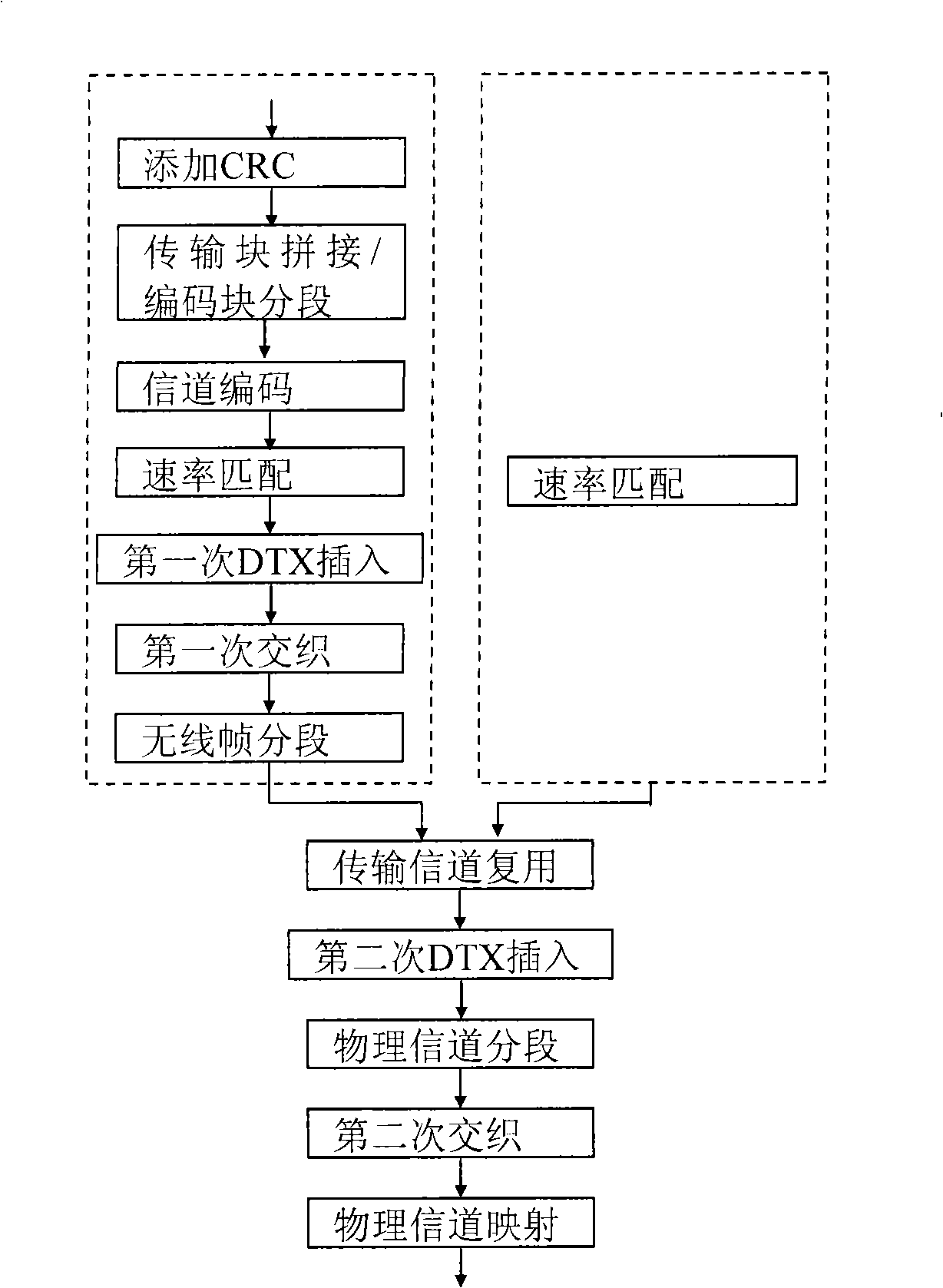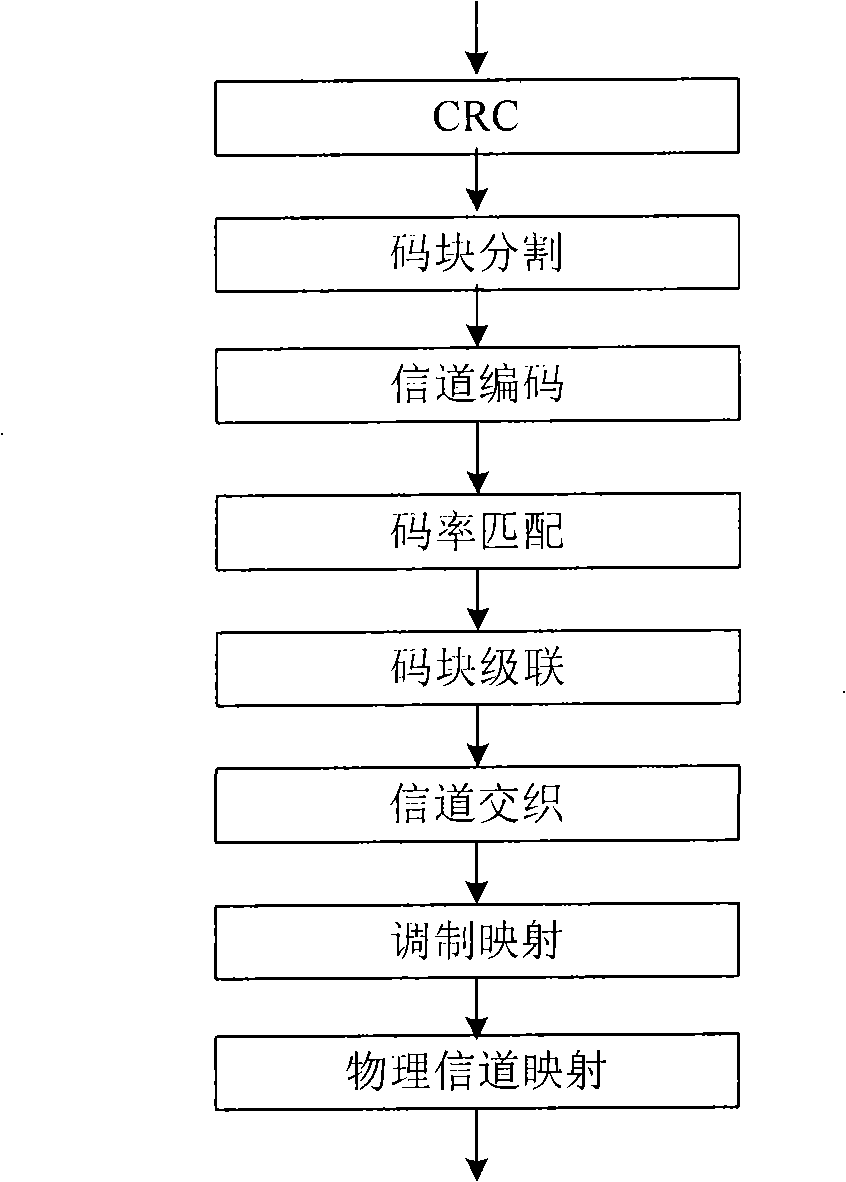Method for encoding mixed automatic retransmission channel
A channel coding and channel interleaving technology, which is applied in the field of hybrid automatic request HARQ and wireless baseband processing, can solve the problems of lower transmission efficiency, failure to guarantee error detection performance, lower link performance, etc., and achieve the effect of improving diversity gain
- Summary
- Abstract
- Description
- Claims
- Application Information
AI Technical Summary
Problems solved by technology
Method used
Image
Examples
Embodiment Construction
[0066] First, explain that the present invention proposes a basic channel coding / transmission signal processing method, such as Figure 6 As shown, it mainly includes the following steps:
[0067] 610) Divide the input transport block into code blocks to generate multiple sub-transport blocks, so as to ensure that the size of each code block does not exceed the maximum code block size allowed by the encoder.
[0068] 620) Add CRC bits to all sub-transport blocks, and the CRC only has an error detection function and has no error correction function.
[0069] 630) Encode the above-mentioned multiple sub-transmission blocks added with CRC respectively, add redundant information, and generate multiple sub-codeword streams respectively, so that the receiver can detect and correct signal errors caused by the transmission medium. Channel coding can be convolutional coding, Turbo coding and LDPC coding etc.
[0070] 640) Pruning and repeating the above multiple sub-codeword streams,...
PUM
 Login to View More
Login to View More Abstract
Description
Claims
Application Information
 Login to View More
Login to View More - R&D
- Intellectual Property
- Life Sciences
- Materials
- Tech Scout
- Unparalleled Data Quality
- Higher Quality Content
- 60% Fewer Hallucinations
Browse by: Latest US Patents, China's latest patents, Technical Efficacy Thesaurus, Application Domain, Technology Topic, Popular Technical Reports.
© 2025 PatSnap. All rights reserved.Legal|Privacy policy|Modern Slavery Act Transparency Statement|Sitemap|About US| Contact US: help@patsnap.com



